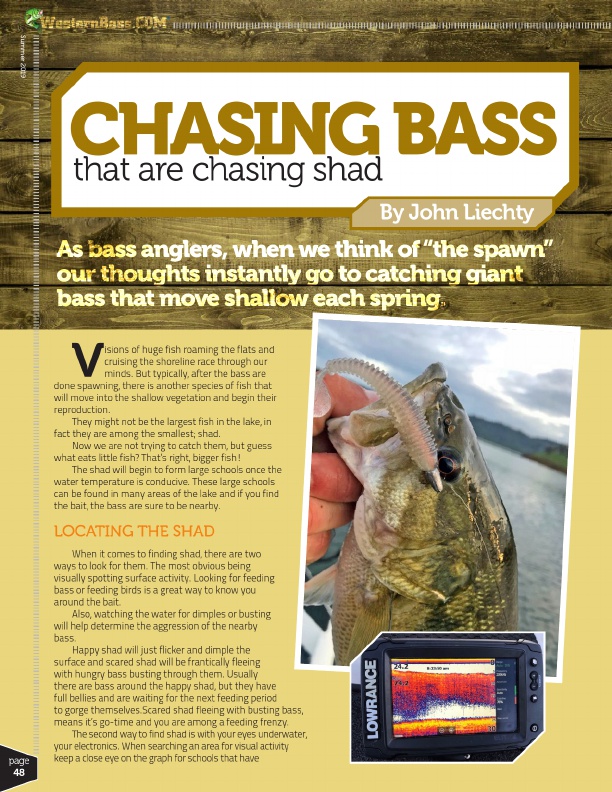
Summer 2019
As bass a n g l ers ® , w he n we t h in k o f“t h e sp awn ” ou r tho u ghts i ns tan tl y g o to ca t ch i n g g i ant b ass th at m o v e shal low each sp r in g .
C tha H t are A ch S as I in N g sh G ad BASS
By John Liechty
page 48
V
isions of huge fish roaming the flats and
cruising the shoreline race through our
minds. But typically, after the bass are done spawning, there is another species of fish that
will move into the shallow vegetation and begin their
reproduction.
They might not be the largest fish in the lake, in
fact they are among the smallest; shad.
Now we are not trying to catch them, but guess
what eats little fish? That’s right, bigger fish!
The shad will begin to form large schools once the
water temperature is conducive. These large schools
can be found in many areas of the lake and if you find
the bait, the bass are sure to be nearby.
LOCATING THE SHAD
When it comes to finding shad, there are two ways to look for them. The most obvious being visually spotting surface activity. Looking for feeding bass or feeding birds is a great way to know you around the bait.
Also, watching the water for dimples or busting will help determine the aggression of the nearby bass.
Happy shad will just flicker and dimple the surface and scared shad will be frantically fleeing with hungry bass busting through them. Usually there are bass around the happy shad, but they have full bellies and are waiting for the next feeding period to gorge themselves.Scared shad fleeing with busting bass, means it’s go-time and you are among a feeding frenzy.
The second way to find shad is with your eyes underwater, your electronics. When searching an area for visual activity keep a close eye on the graph for schools that have